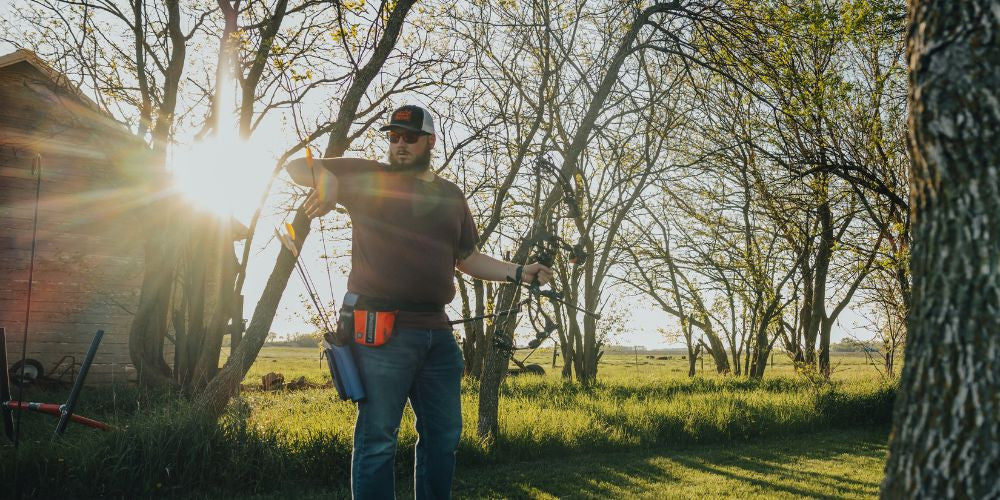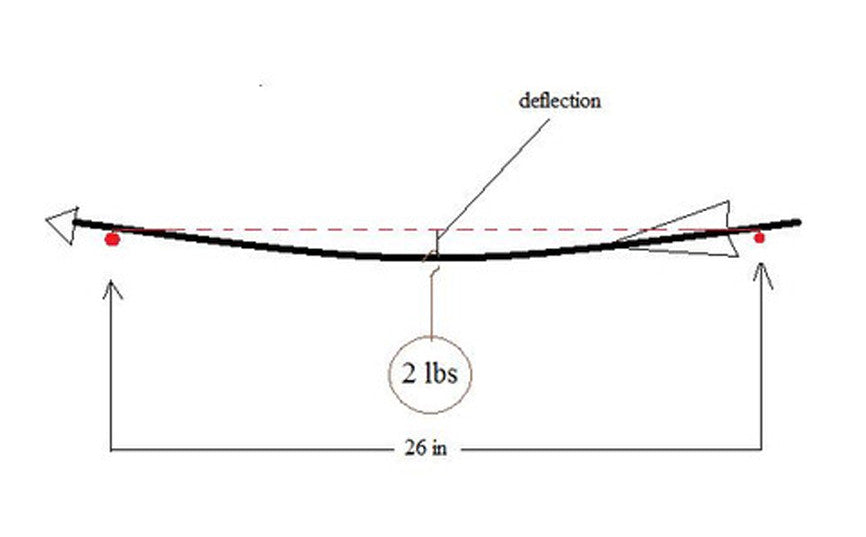Now that we have covered the behaviour of motion from some classical scientists dating back 2000 years I think it’s time we took a look at the way arrows move the way they do. Arrows are a graceful and elegant form of ammunition, they have a beautiful design that matches the bow and the two of them work together for the archer’s style and consistency. Arrows fly through the air just like any other flying machine however unlike aeroplanes they don’t have wings to lift them into the air. Their ability to fly through the air comes from the tensile strength of the bowstring. Thrust into the air like rockets at distances of up to 100 yards. As a space geek I know that arrows and rockets fly through the air in very much the same way but their structure is very different from one another. Rockets are designed to be large cylindrical tubes containing millions of gallons of explosive liquid fuels, which constitute about 90% of their mass. Arrows on the other hand are long thin shafts of metal, wood or carbon. For hundreds of years they were simple wooden shafts with metal heads and feather vanes. They was nothing complicated about that but underneath that elegant design is an intricate patchwork of geometry that gives the arrow a flight of fancy. Today we have arrows that are made from materials that can be precision engineered to make them lighter, flexible, rigid and more powerful. This gives them a stiff and agile geometric shape to make them able to fly high and away onto the target. In archery an arrow’s stiffness is an important factor in their ability to fly. The arrow’s stiffness is defined by the arrow’s spine. Just to avoid confusion the spine is not the shaft, the spine is the stiffness of the shaft and there are several ways to define the spine. The spine in the context of an arrow is defined in three ways: a static spine, a dynamic spine and the arrow direction.

Static spine refers to the stiffness of the arrow and it’s resistance to bending. To determine static spine a 2 pound weight is held at the centre of the arrow. The amount of bending or deflection of the centre point determines the spine and the spine must be right for your draw length and bow weight so that the arrow clears the bow handle without contact. This deflection is measured in thousandths of an inch, which forms part of the arrow’s dimensions. The spine itself is determined by the geometry of the shaft. This includes the arrow’s material, the inside diameter of the arrow, the cross section shape and the thickness of the material (carbon, aluminium, etc.) An arrow with a high spine will not sag as much as arrows with a low spine. All arrows have a two, three or four digit number which tells you the shaft diameter and the thickness of the walls of the shaft which tell you what the spine is, depending on the material of the arrow. For example my arrows are made of aluminium and they are Easton Platinum Plus 1816. That’s 18/64 of an inch in diameter and 16/1000 of an inch in wall thickness. Arrow manufacturers provide arrow spine charts for archers to select the arrows that suit them.

The dynamic spine tells us how much the arrow bends when it is fired. It’s difficult to define dynamic spine because the physical effects on it are hard to determine mathematically. It’s a prime example of rocket science, and it requires a comprehensive study of the arrow’s behaviour in flight. However it can be defined by the causes of the flex that the arrow undergoes upon release. This depends on the stiffness from the static spine, the string force, fletching, nock weights, the shaft length and the arrow head.The bending of the arrow also plays a role in the way the arrow clears the bow. The way it clears the bow is called the archer’s paradox. When the string is released and all that energy is transferred to the arrow the arrowhead pushes against the bow and the bow resists this push, which causes the arrow to bend. As the fletching comes to the bow handle the bending of the shaft allows the fletching to move away from the arrow rest and the bow handle. This flexing phenomenon can be altered to reduce the dynamic spine of the arrow by using a cushion plunger so that the arrow alignment is correct and bring it to a centre shot location.

The third definition of the spine being the arrow direction. That might not sound like much in the case of the physics of archery but it’s about finding an arrow with the right amount of flex. The flexibility of an arrow must be in tune with the bow weight because such bows can affect the way the arrow is let go. Use the wrong dynamic spine for your bow and it will result in unpredictable contact between the arrow and the bow which in turn leads to reduced accuracy.
Although it’s a complex pattern of design for an arrow there is another part of arrow flight that is common amongst all flying projectiles: aerodynamics. Aeroplanes travel through the air and are balanced by four forces: thrust, drag, lift and weight. Arrows and many other projectiles have only got three forces to keep them going towards the target that is thrust, drag and weight. Some people have often believed that the fletchings on an arrow can lift them into the air. Well that’s not actually true, small wings on some aeroplanes are not supposed to keep them in the air. Instead and in the case of arrows fletchings function as aerodynamic stabilisers. They catch the wind and use it to steer the arrow as it glides through the air. Arrows use the thrust of the energy in the bowstring upon release to make them go forward, drag on the body of the arrow affects the speed and gravity pulls it down to the ground which causes the shape of the arrow flight to be parabolic.
On arrows the drag effect is as tricky as understanding the spine. It’s in two forms. The air that it flies through is a fluid medium which gives shear drag and form drag. Shear drag is a result of the arrow moving through the air. Kinetic energy is expended to move the air out of the way so that the arrow can pass and as it pushes on the air, so does the air push on it. This drag is proportional to the speed of the arrow and it’s size. The other form of drag is called form drag, this results in a force pushing perpendicular to the direction of flight when applied alongside the shear drag. The movement of the arrow through the air causes a layer of turbulent low pressure air. This layer is an area called the wake, and it’s created using the kinetic energy of the arrow itself. This energy creates an apparent force which pushes the arrow upwards; perpendicular to it’s path of flight.

This force caused by the effect of the drag acts upon the fletchings and this allows them to stabilise the arrow. Without them the arrow would be forced to spin uncontrollably through the air. The form drag generates torque and the fletchings causing more force to be applied at the rear resulting in a counter-clockwise torque which eventually stabilises the arrow onto a horizontal path. Once this happens, gravity will continue the counter-clockwise torque by drawing the arrowhead downward, and the wake will invert under the arrow. This leads to the form drag pushing the arrow down at the nock end, which in turn drives the arrowhead back up again. This results in frequent oscillations in flight which run down the whole body of the arrow. The force of gravity also plays a role in bringing the arrow back down, but that happens once the initial speed has been overcome.
The size of the fletchings must be correctly proportional to the size of the arrow so that they are effectively aerodynamic. Larger fletchings will slow the arrow down with more shear drag but respond better to form drag, making the arrow more stable and increasing accuracy, but they can only work for short distances. Smaller fletchings won’t slow the arrow as much, however they make the arrow wobble ridiculously in the air. Making them stray far and away from the target.
There are a lot of invisible forces at work in archery. Forces which are governed by the laws of physics. Nature does go about it’s business in strange ways that you need to understand in order to be a successful shooter. For a successful archer to hit the target the laws of physics should never be ignored. A bow and arrow be must finely tuned to standards of a championship shooter. Nobel prize winning physicist Richard Feynman once said that ‘For a successful technology reality must take precedence over public relations, for nature cannot be fooled!’
 cust@legendarchery.com
cust@legendarchery.com 302 503 5767
302 503 5767 Sauk Village IL 60411
Sauk Village IL 60411


